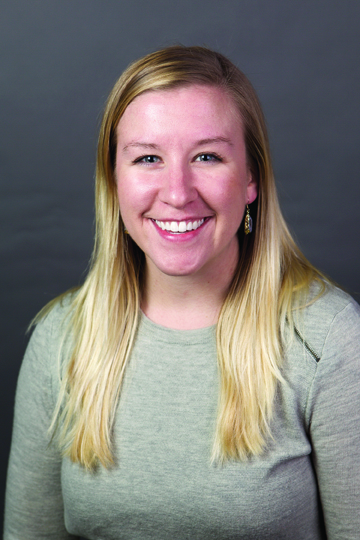
by Mark Smiley | Mar 1, 2018 | Feature Story Middle Left
by Monica Heinrichs
Meat continues to rank at the top of America’s choices for protein; however, more and more people are considering plant-based proteins as a real option for their health. Plant-based nutrition, also known as vegetarianism or veganism, has been on the forefront of nutrition studies for several years now. Time and time again, these studies are showing that plant-based diets, specifically protein sources, are exceeding the benefits of those proteins that are animal-based. Plant-based nutrition can maximize intake of essential nutrients, often missing from a meat-based diet. Vitamin E, heart-healthy omega-3 fat, folate, and maybe most important, dietary fiber are all increased with a plant-based diet.
If you have ever considered adding in more plant-based proteins and limiting meat-based proteins, here are some things you should consider.
- Take things gradually. Although there are many benefits to adding more plant-based choices into your diet, it is important to take it slow. This same tip goes hand-in-hand with working out. If you are new to working out, you should start slow and increase difficulty as you see progress. When it comes to nutrition, it is important to consider how your body is reacting to any dietary changes. Don’t eliminate meat out of nowhere, and then load up on salads for a week. Allow your body time to adjust, and adapt, to the new foods you introduce.
- Focus on Health. It should be noted that plant-based diets also include things like potato chips and dark chocolate. This is not to say that these things cannot be eaten, but the goal of a plant-based diet is to increase foods like fruits, vegetables, nuts, and legumes. Eating only potato chips is technically eating plant-based, but it won’t give you the strength to hit the gym.
- Be prepared to eat more. Working out requires taking in enough calories. If you typically eat meat and breads, you don’t have to eat very much before you reach your daily calorie limit. This is because oil and fat are calorically dense. On the other hand, vegetables, fruits, nuts and legumes are high in nutrients but low in calories. This means, if you choose to add more plant-based proteins into your diet, and remove meat, you will need to eat more plant-based foods throughout the day!
- Expect better recovery. Vitamin E aids in disease prevention of the heart and blood vessels as well as improving physical and muscular endurance. Vitamin E can increase your energy and reduce levels of stress on your muscles after you exercise. Less soreness, yay! Nuts and seeds are some of the best sources of vitamin E. Mangoes, avocados, and butternut squash are also great sources. Adding these plant-based foods into your eating habits surrounding your workouts can aid in faster recoveries and help your muscles and joints feel stronger.
- Be flexible. If you choose to add more plant-based foods, and remove meat, you will need to be flexible and alter your diet as you go to keep feeling your best. Experiment with what you eat, when you eat, and how it affects your performance. You may find you have more energy for workouts in the morning, or you may be at your best before or after a snack. Remain open to different solutions and make adjustments as needed.
Combining more plant-based foods and your workouts can be done effectively, with these considerations. Protein rich nuts, seeds, and legumes are great options for improvements in muscle growth and provide additional vitamins and minerals. Overall, eating more plant-based foods can help you rethink your approach to food. The trick is to listen to your body and eat nutritiously.
Monica Henrichs is the Health and Wellness Director at the Glendale Sports Center. She is originally from Wisconsin and is a Green Bay Packers fan. She is a certified Personal Trainer, Health Coach, and Group Fitness Instructor with eight years of experience working with all types of people toward their health and fitness goals.
Monica Heinrichs

by Mark Smiley | Mar 1, 2018 | Uncategorized
Are you Irish, me lads and me lassies? Well, the saying goes everyone is a little Irish on St. Patrick’s Day (March 17). More than 34 million Americans are of Irish descent. That’s almost nine times the population of Ireland! The Spring Vernal Equinox brings days and nights in equal proportions just three days following St. Paddy’s Day.
From the West’s biggest Irish parade to shamrock and leprechaun symbols, the Valley becomes the Emerald Isle for a weekend celebrating Irish custom and traditions.
Here are our fairytale and folklore choices for shopping, dining and entertainment to keep you marching toward spring without soothsayers or winter holding you back:
3 Following a week of events beginning March 1, the highly anticipated Kirkland Museum of Fine & Decorative Art’s new building in the Golden Triangle opens to the public March 10. Information: 303-832-8576.
3 Catch Amy Dickinson’s speech at Florence Crittenton’s 125th dinner in the Hilton City Center March 8, 5:30 p.m. Information: 720-423-8913.
3 Treat the kids to the Denver Children’s Theatre fairytale production of Sleeping Beauty March 8-May 4 at the JCC. Information: 303-316-6360.
3 If you missed the DYAO Spectacular at Gates the Young Artist Orchestras play again at Boettcher March 12, 2:30 p.m. Information: 303-871-7720
3 Make fitness fun this year at Glendale’s JCC Fitness-Wellness Center newly outfitted with an array of equipment, a small group-training studio, plus renovated locker rooms. Open to everyone. Information: 303-316-6300.
3 Lamb historically is the Easter-Spring meat of choice. Enjoy the classic fresh flavor of spring lamb slowly roasted outside on rotisseries at the Monaco Inn Restaurant April 1, 12-8 p.m. Information: 303-320-1104.
3 Vote for best dish at Great Chefs of the West EXDO Center event March 15, 6 p.m. benefiting the Kidney Foundation. Information: 720-748-9991.
3 Journey to the Hyatt Regency Convention Center for Junior League of Denver’s fundraiser on March 23, 6 p.m. Information: 303-692-0270.
3 Hoop it up for March Madness at National Jewish Health’s Hoops & Hoopla March 31, 3:30-9:30 p.m. Watch both games of the Men’s College Basketball Semifinals in Glendale’s Infinity Park Event Center with wrap-around screens. Attendees enjoy a gourmet buffet, open bar, silent auction plus Basketball Pop-A-Shot and casino-arcade games. A benefit for the Morgride Academy for chronically ill kids. Information: 303-728-6576.
As March Madness teams bid and fans bet on who will play in NCAA’s Big Dance basketball playoffs consider that March 14 is National Pi Day. Pi is a mathematical concept and a number that never ends. Albert Einstein was born March 14, 1879. Perhaps the sequence created Pi Day or maybe it was the bounce of a basketball.
Nearly every day in March warms to over 40 °F. Moreover, the Valley averages three days during the month when the thermometer reaches into the 70s, or higher.
Indoors or out, no one relaxes in March due to wind and taxes. But St. Patrick’s Day is about looking forward to better days. Even if you remember to wear green on March 17, you’ll still get a “pinch” of humor from this Irish thought: What do you get when you cross a four-leaf clover with poison ivy: A rash of St. Paddy’s Day good luck!
— Glen Richardson
The Valley Gadfly can be reached at newspaper@glendalecherrycreek.com.

by Mark Smiley | Mar 1, 2018 | Editorials
 Denver media recently hyped that the eating and entertainment district along Cherry Creek near Virginia Avenue known as Glendale 180 is once again right around the corner. Channel 7 News declared that the “city could break ground as early as next year.”
Denver media recently hyped that the eating and entertainment district along Cherry Creek near Virginia Avenue known as Glendale 180 is once again right around the corner. Channel 7 News declared that the “city could break ground as early as next year.”
Deputy City Manager Chuck Line is quoted in a February 19, 2018, story in The Denver Post about the project: “Before, we were barely getting out of the driveway, and now we’re definitely driving down the interstate.”
Oh, pleaseeeeee! Members of this Editorial Board were instrumental in envisioning The Glendale Riverwalk which was later retitled Glendale 180 as far back as 2003. Since then, every few years the city has publicly announced that a groundbreaking would occur in the next 12 to 18 months.
Of course, it is not entirely the city’s fault. After an announcement that the city was envisioning building a Riverwalk modeled after the one in San Antonio, Texas, Mohammad Ali Kheirkhahi and his family who own Authentic Persian and Oriental Rugs rushed out and outbid the city for the 3.8 acres of developable land fronting Colorado Boulevard from longtime owner Jimmy O’Connor.
Grossly overpaying for the land, Kheirkhahi and his family apparently hoped to hold up the city for over three times what they paid for it. When the city declined, they went out and asserted the city was threatening eminent domain and organized potentially violent marches with the para-military groups like the Oath Keepers and others in an attempt to cow the City Council.
When that failed, the rug merchants brought a series of highly expensive lawsuits utilizing some of the most expensive lawyers in Colorado and the nation to stop any d

evelopment on land other than theirs. Having lost those lawsuits after spending hundreds of thousands of dollars, Kheirkhahi and his kin have filed numerous questionable ethics complaints with the highly dubious Independent Ethics Commission.
But the rug merchants may have finally outsmarted themselves. At their request the Kheirkhahi land was excluded out of Glendale’s Downtown Development Authority. Thus any development on their land cannot by law receive any tax increment financing. Because of that fact Kheirkhahi’s land is now worth a great deal less to any potential purchaser.
Having beaten back the rug merchant’s vicious attempts to destroy Glendale 180, the city has now entered into a Development Agreement with the highly regarded Lincoln Properties. But that is only the first step, and not the last, in getting Glendale 180 to become a reality. The next crucial step is agreeing to a “Financing Agreement” whereby the parties concur on how to pay for everything. Many a project in Colorado has died due to disagreements on who and how everything is going to be paid.
If that huge hurdle can be overcome, Lincoln Properties must submit a Site Plan for the land which would meet the public’s approval and garner a majority of the City Council. Even if that is obtained there is no assurance that the bonds and other financing instruments envisioned by the “Financing Agreement” can be successfully marketed. That will in part depend on how Colorado’s economy is doing when the city goes to the financial markets.
Thus, with all due respect to Mr. Line, we are afraid the city is hardly cruising along the highway to the destination of a completed project but rather Glendale has but simply left the driveway. When a “Financing Agreement” has been signed and a “Site Plan” approved, talk of a possible groundbreaking ceremony becomes viable, but even then, by no means assured.
We will let our readers know from time to time how Glendale and Lincoln Properties are doing regarding their goal of getting to a completed project. Excessive hype in the early stages of an actual project is not always helpful. Congratulations to Glendale and Lincoln Properties on the Development Agreement, but a great deal of hard rowing still awaits all involved.
— Editorial Board
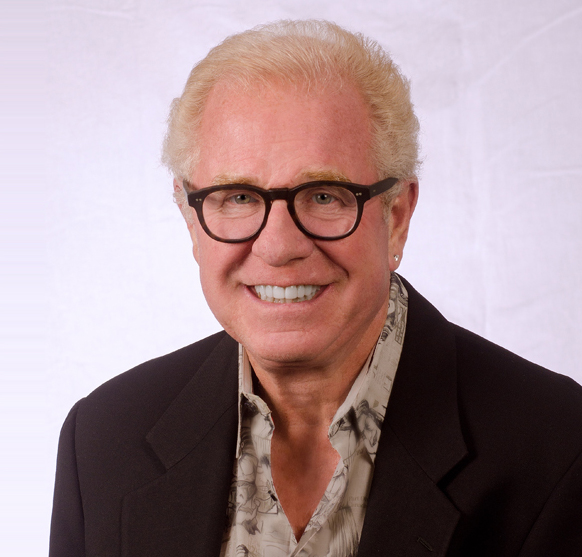
by Mark Smiley | Mar 1, 2018 | Blasting with Boyles
 In last month’s award-winning Glendale Cherry Creek Chronicle column, I wrote about the con job being perpetrated upon you to bring in the Winter Olympics. A quick update. The Winter Games in South Korea will cost $13 billion dollars, double what they thought it was going to cost. NBC paid $963 million for the television rights and, like the NFL, viewership is down. That’s all just chump change to the hornswogglers, footpadders and copperheads that run the media and pull the strings of the power elite in Denver, Colorado.
In last month’s award-winning Glendale Cherry Creek Chronicle column, I wrote about the con job being perpetrated upon you to bring in the Winter Olympics. A quick update. The Winter Games in South Korea will cost $13 billion dollars, double what they thought it was going to cost. NBC paid $963 million for the television rights and, like the NFL, viewership is down. That’s all just chump change to the hornswogglers, footpadders and copperheads that run the media and pull the strings of the power elite in Denver, Colorado.
After that column hit, another great con job got presented. … Pat Bowlen Field.
I always return to my roots. As a boy I was a fan of professional wrestling. My Grandma was a fan of professional wrestling. I later found out when I got an opportunity to work in professional wrestling that I really was a fan. The wrestlers called us “marks.” A carney term. You can go to the carnival, according to legend, they would put a guy behind you who put a mark on your shoulder in chalk that allowed other carnies to know you were a mark, aka a sucker.
Now those same people who ran the Olympics are running Amazon and, actually made an attempt to have heroin shooting galleries in Denver, are marking you for a football stadium named for Pat Bowlen.
The Bowlen family and the franchise itself are believed to be worth somewhere between 2.4 to 2.8 with a “b” billion dollars.
Former Mayor Wellington Webb, one of the committee members to bring the Olympics to Denver, is urging Broncos fans to belly up and buy the name to establish Pat Bowlen Field at Mile High Stadium. With all due respect, knowing Mr. Bowlen’s inability now to maintain authority with your Denver Broncos my first response was are you jerking me around? You’re kidding, aren’t you?
Then I realized that they weren’t. That local hard-hitting media outlet, Channel 9, totally laid down with how sad it is the HVAC systems and concrete floors need repairs and that there’s part of the parking lot that floods. Who’s zooming who?
It’s hard to get a definable number of how much maintenance it is to take care of Pat Bowlen Field but it ain’t on the cheap and how dare you ruthless bastards make Annabel and the kids pay it out of their own pocket.
Think in these terms. Everybody needs a new roof on their house, pave the driveway, put in a new furnace. Wouldn’t it be great if everybody in your neighborhood had a go fund me page that would totally take care of your yard for you, put on the new roof and what my father used to call storm windows installed? And of course, your paycheck would go just a little bit further because the people in your neighborhood are paying for the maintenance of your home. The Denver Post also thought it was a great idea with an editorial on January 31 titled “Buy back Mile High Stadium’s Heritage.”
My colleague, one of my best friend’s wife Julie Hayden, said, “You mean they want fans to kick in and pay for everything, above and beyond everything else?” Yes, Julie there is a Santa Claus and you’re the mark.
It’s amazing there is something called the Metropolitan Stadium Football District that needs a revenue stream to keep “our” football stadium in top-flight condition. Look on your back see if anybody chalked an “x.”
I leave you with this. Mike Roberts at Westword did a great piece on the Denver Broncos having the second most arrested players in the NFL. I say if you add John Bowlen’s arrest record, after all he is a Bronco, “we’re number one.”
See you on the radio.
— Peter Boyles
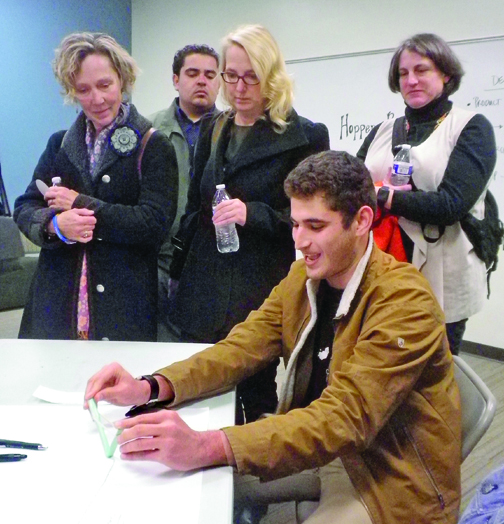
by Mark Smiley | Jan 29, 2018 | General Featured
The CUBE Focuses On Innovative Learning And Real-World Experiences
by Ruthy Wexler
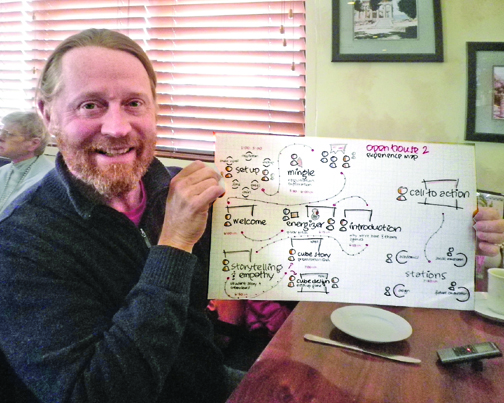
Co-Founder: Jim Stephens, co-founder of The CUBE, displays his plans for the Open House that was held on January 8, 2018. Stephens hopes to have enough students enrolled by the end of February 2018. The requirement is 93.
The CUBE, a new high school in Denver, is ready to enroll students and eager to explain how their innovative program not only boosts reading, writing, and math skills, but connects students to the real world — and their best selves.
Since Denver Public School’s school choice enrollment takes place February 1-22, The CUBE held a series of Open Houses in January, “so kids and parents could see who we are and what we do.” At the first one, held on January 8 in The CUBE’s temporary home, Vickers Boys and Girls Club, an attentive, curious group began to grasp how profoundly different this school would be.
“But don’t you have … classes?” one mother asked.
“Yes, we have classes,” smiled co-founder Bret Poppleton. “But they’re not what you’re used to. One course students can take first semester is ‘Flour, Water, Salt and Yeast.’”
“They bake bread?” said a puzzled adult.
“Yes. And that’s fun and engaging. But they also learn chemistry, math, research, writing … because all those things are involved.”
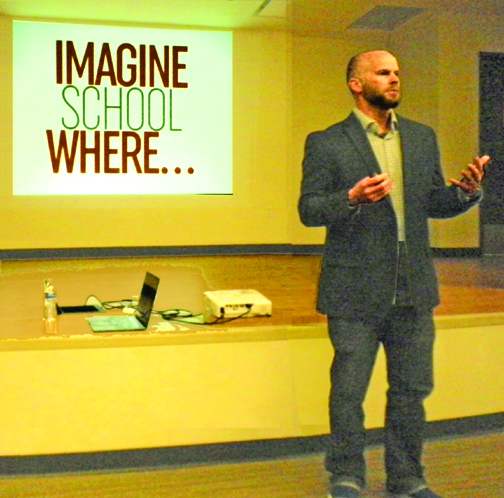
Presentation: Bret Poppleton, co-founder of The CUBE, explains CUBE concepts to parents at the Open House. School Choice for Denver Public Schools runs from February 1 to 28, 2018, and CUBE supporters hope to enroll 135 students.
Because It Was Real
“We call our courses ‘mash-ups,’” Poppleton explained. “An interdisciplinary smashing together of ideas that teaches students to think more deeply about the world. It’s actually how real learning happens. Not linear but from all directions. Starts with being engaged.”
He shared an epiphany. “In middle school, I was always complaining, ‘Why do I have to learn this?’ Then, between 10th and 11th grade, I spent a week in construction, building homes. I learned more that week, it seemed, than in a whole year of school. Because it was real.”
The CUBE’s other founder, Jim Stephens, told much the same story. “Between my sophomore and junior years of college, I went to Jamaica, a summer field school for anthropology. At first, I thought, great, a vacation. But doing excavations right there on sugar plantations with descendants of enslaved people, I understood history so deeply. I drew the artifacts, made maps. It all connected. For the first time in my life, learning came alive.”
Based On Research
What happened in Jamaica — what will occur at The CUBE — is “integrated learning,” said Stephens, who honed his educational skills for years before embarking on a “national search for the kind of place I wanted to teach” — and landed at the Denver School of Science and Technology (DSST).
“I learned so much there,” recalled Stephens, whose passionate interest in the swiftly-shifting future was shared by DSST colleague Bret Poppleton.
The more the two learned how the world was changing — how radically different the work force will soon appear — the more they wanted to equip students with the skills to “pivot”; i.e., change direction with confidence.
Soon they agreed: “Let’s open up our own school.”
“First, we needed to understand the teenage brain the same way that Montessori understands the early years,” Stephens recalled. “Studies show, for example, that the brain’s sleep pattern changes markedly during adolescence. That’s why teens fall asleep in early classes. Our classes won’t start until 9 a.m.” [Although The CUBE will stay open from 7 a.m. to 7 p.m.]
Questions
On January 8, impressed parents nonetheless had worries.
“What about standardized testing?”
“Yes, we take them. All our kids will learn to read, write, compute and think, skills absorbed so much more easily when engaged,” said Poppleton.
“Is there homework?”

Demonstration: Abcim Molavi, former student of The CUBE’s co-founders, demonstrated his solution to the Hopper Project as parents look on at the Open House held in January. The Hopper Project is statistical machine learning for advanced search of mathematical and scientific literature.
“Working on a project, doing research, that’s homework,” Poppleton said. “But they’ll love what they’re doing and learn more.”
“What about transcripts?”
“We have a transcript format that includes the traditional information, as well as social-emotional and 21st century skills data.”
“Accountability?”
“We offer fun and engagement, so we expect more participation. But we have expectations too. When students finish one of the mash-up classes, they must do three things: write a paper, create a product, do a presentation.”
Future
Earlier, Jonathan Best, The CUBE’s “Computation Jedi,” had led students to an adjoining room. After an hour, parents joined the kids, who’d been divided into groups and instructed to build “something that moved” from a box of ordinary objects.
“We’re telling them, ‘You’re smart, you can figure out how to build something that moves from these few materials,’” explained Best. “It’s not about competing. It’s building confidence to think outside the box.”
The CUBE’s founders excitedly envision a student body “where every kid knows how to code,” week-long courses “that take place in the real world, like an ice-climb in Ouray,” unlocking “the huge potential inside each child.”
Currently, they’re addressing the challenges of any new school.
“Fundraising. Finding the facility. Getting kids,” listed Poppleton. “We’ve already raised $2.5 million.”
“We’re going to take 135 students,” said Stephens. “Or more. But by the end of February, we have to have 93.”
What if too few sign up?
He smiled gently. “Well… then people aren’t ready for our school.
“But I hope they are. We’re ready for them! We can’t wait to show how powerful storytelling and empathy and mash-up classes are.
“We don’t use the term ‘alternative’ — because we believe all schools should look like this. And will, in the future.
“It’s just that The CUBE is doing it now.”
For more information, go to www.thecubeschool.org.










